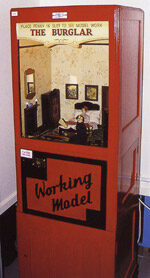- Home
- Replacement Artwork,logos,etc Available
- The Allwin Arcade
- Trade Stimulators
- The Strange & Unusual
- The Aristocrat Collection
- The Bally Collection
- The Bell-Fruit collection
- The BDR/BMR Collection
- The Bryans Collection
- The Buckley collection
- Caille Brothers Collection
- Working Models
- The Groetchen collection
- The Hawtin's Collection
- The Jamieson's Collection
- The Jennings collection
- The Mills Collection
- The NSM (Bingen) Collection
- The Oliver Whales Collection
- The Pace Collection
- The Parkers Collection
- The Rock-ola collection(slot machines)
- The Ruffler & Walker Collection
- The SEGA Collection
- the Shefras collection
- The TH.Bergmann Collection
- The Tom Boland collection
- The Watling collection
- The Whittaker Bros Collection
- the Wondermatics collection
- The Wulff Collection
- The Juke Box Age
- Coin Operated Cranes & Diggers
- Coin Operated Shooting Games
- Coin Operated Weight Scales
- slot machine coins & tokens for sale
- Amusement Arcades from the Past
- The British Seaside Pleasure Pier
- The Market Place
- Coin Operated Related Seaside Postcards
- See a Selection of the More Complex Machines at Work
- Stuart Dale's Imperator Rebuild
- Stuart Dale's Steam Shovel Project
- The "Allwin" Machine
- Useful Links
- The Rye Heritage Ctr Collection of Working Models
- Williamson's Vintage amusement arcades
- Contact Us
The Working model
Of all the slot machine types in the world the Working Model has to be the oddest. By rights, it shouldn't have ever gotten into production, at first sight, they appear to have a limited appeal and a short attention span, they were expensive and difficult to make, they are large and cumbersome, and there is no payout. Yet right from their arrival on the scene, they were popular and good earners for the operator.
Although they came in many guises the basic idea was a large upright cabinet with a glass windowed top section. inside this top section, a 3D scene was portrayed. Various parts of this scene became animated when a coin was inserted into the machine. the show lasted less than a minute, every time the machine was played the operation was exactly the same. So where is the fun in that? at least after one go. Yet these machines stayed in operation, often on the same site for decades and today they still fascinate children of all ages and are one of the most sort after and expensive machines on a collector's wish list.
All that in itself is a little odd, but there is one more aspect of the working model that is hard to understand, they have a particularly British feel in every way, and, with a few exceptions, never caught on in countries other than the UK.
Ask an Englishman if he knows what a coin-op "working Model" is and most likely he will, smile and recount some memory of one from some time in his past, but for those visitors to this site who are new to this type of machine, a little more explanation is needed. Here is one of the most well-known, "The Drunkards Dream"
In 1871 Henry Davidson built a working model of a chimney sweep jumping off of a roof. He displayed this at county fairs and exhibitions in the UK. The idea was picked up by a clever engineer named John Dennison who made two working models in 1875 of a drill and a lathe being used. These were so popular he started making more complex working models and mechanical fortune tellers
. 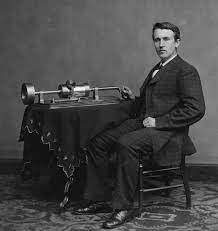 John Dennison
John Dennison
He was soon making more complex models using the 3D dioramas that would become the standard style of the working model. Hand operated at first they were one of the first slot machines to benefit from electric power, a single motor drove a complex set of pulleys and cams working the moving parts at the correct times. Below is a particularly good video showing Bolland's "The Night Watchman" including a view of the mechanism in action.
"The night watchman" Bolland 1950 with a view of the mechanics in action
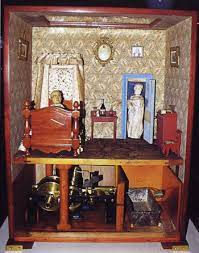
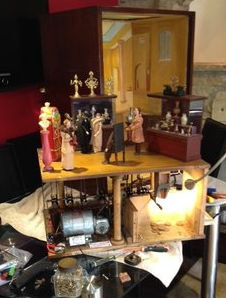
The works of one of the more simple models The more complex "Murder in the Museum"
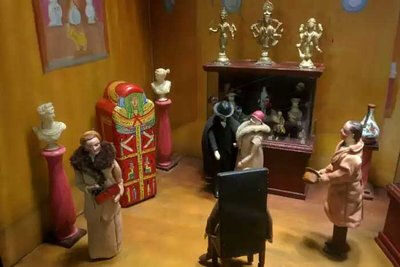
The Diorama of "murder in the Museum" The beautifully crafted models and furniture were made by John's daughters who worked in the business and eventually ran it after John's death in 1925
John was not known for his business acumen, and never did mass produce his machines, but he did make one very shrewd move. In 1890 he signed a deal with the Blackpool tower company, which was building the famous tower in the seaside town of Blackpool. This deal gave him sole rights to install his machines in the tower amusements (but he didn't sell them the machines, in fact, he never sold machines only leased them out to sites which he ran).
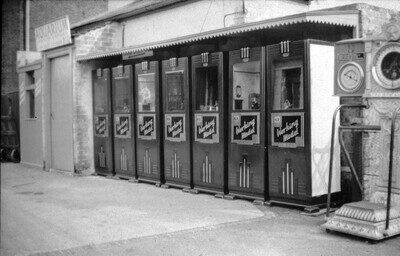
An impressive row of working models on site at Chessington zoo, Surrey
From the opening of the tower in 1895 until his daughters sold the rights back to the Blackpool Tower company in 1944 this provided a good regular income for John and his family. The tower continued to operate the Dennison machines until 1963, a staggering 67 years of the same machines in operation. After John's death in 1925, his daughters continued to run the business successfully and some of the best quality machines come from this period,
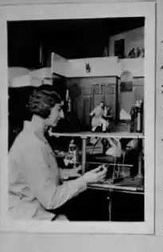
One of John's daughters works on a machine in the 1930's
The makers used many themes but it was the horrific and macabre themes that were by far the most popular. The names of these machines told it all, "Suppper with the Devil", "midnight in the haunted churchyard", "murder in the Museum" and "the French execution" all were big earners, along with "The Drunkards Dream" and "The Miser" two machines that are perhaps the most remembered these days.
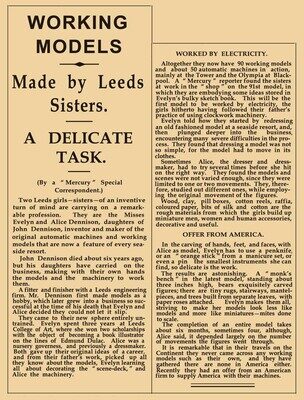
1930's article about the Dennison sisters
Other companies were soon joining in, the long-standing Ahrens company famous for their cast iron sports machines made some and Tom Bolland became a big producer with some of the best themes like "Hells Kitchen" "the old Mill" "The attic" Bloody Tower" and "Frank-n-Stine". Bolland, in typical Bolland style, used old mechanical coin-op crane cases re-fitted to take working models as well as cast metal cases suitable for outdoor use.
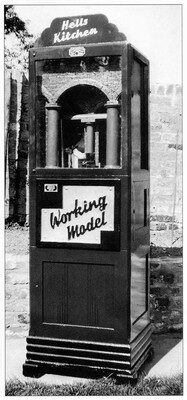
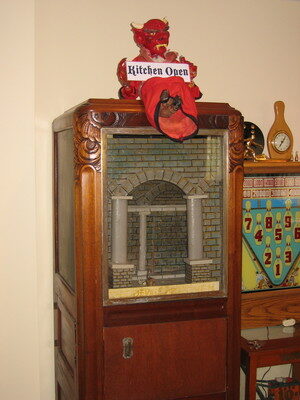
two versions of "Hells Kitchen"
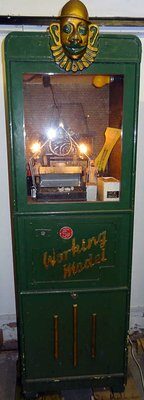
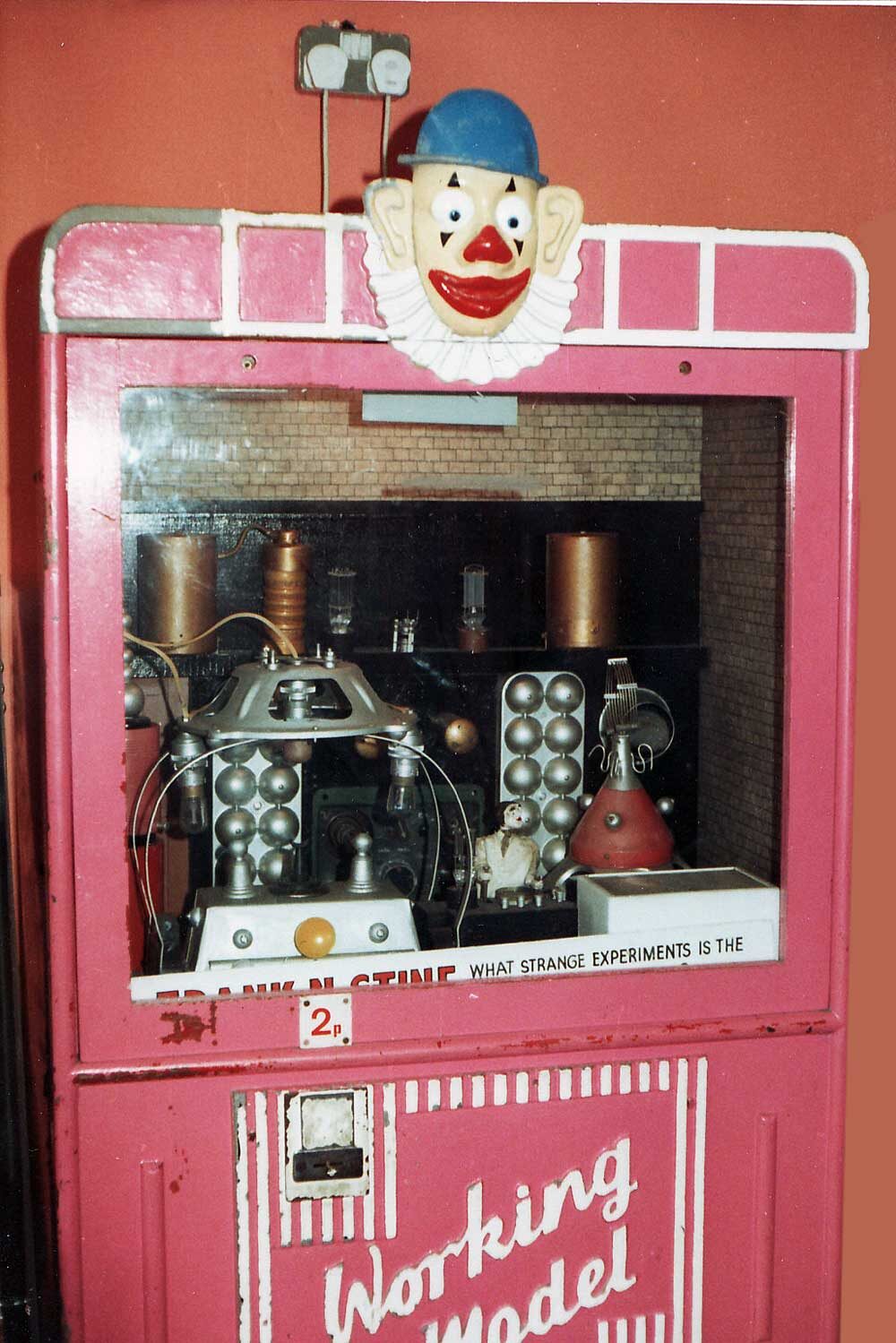
Some Boland models were more popular than others hence some, like this "Frank-n-stein", are very rare
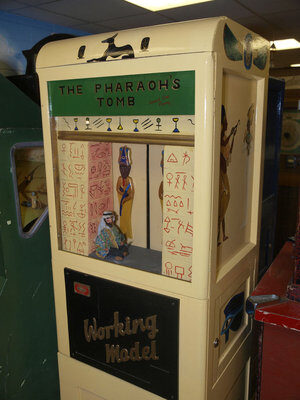
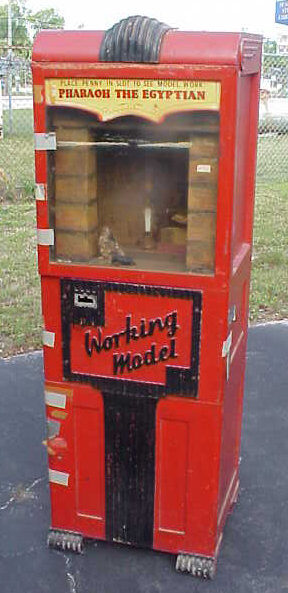
Mass production was never a consideration with working models, each one seems to have been a labour of love or was it "grab whatever is at hand on the day" Dennison never imagined the idea of mass production and Bolland's idea of building coin-op machines was always the same, 'Use whatever is available' as these two "Pharaoh" machines demonstrate, different cases, different decor even a different name just a standard mechanism for that particular machine. The difference in the quality of these two is quite remarkable.
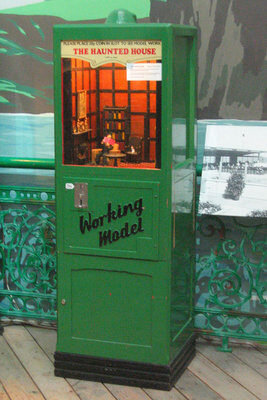
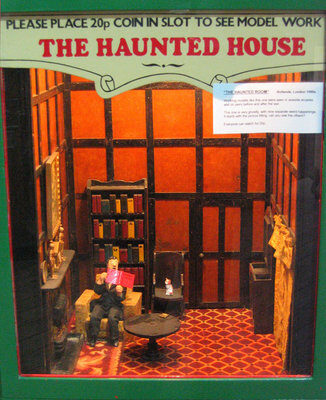
One of Bollands most popular models "The Haunted House"
Nelson Lee was another talented working model maker, the rare "Mary Queen of Scots" was made by him.
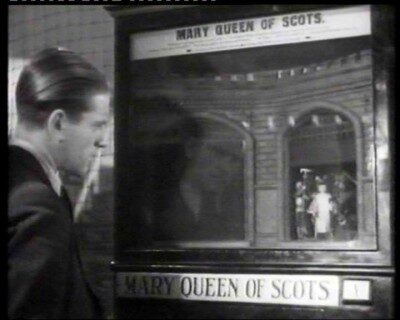
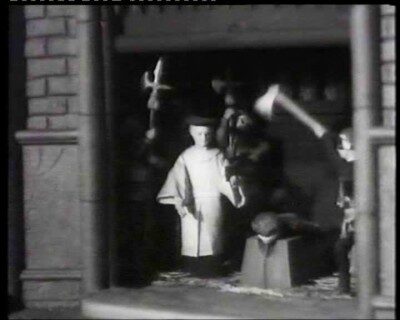
The execution of Mary Queen of Scots closeup of the final part of the show
Working models could still be found on British seaside piers as late as the turn of the millennium
Today most working models are in private collections all over the world, but some can still be found still pleasing all ages of the British public from 7 to 70. The heritage Centre in Rye, Sussex has a large collection.
Why these huge machines capture the imagination of today's more sophisticated public just as much as they did in Victorian times, and why they have remained a very British slot machine is a mystery. My guess is it's the individuality of each and every machine and that the British have always loved the mystery of a mechanical machine, and when you watch the 40-second-long working model show your first thought is not "what a great show" it's "I'd love to see how it works"
I will show some photos of machines but for the most part better to show videos.
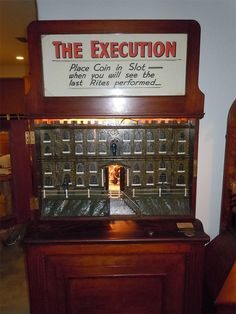
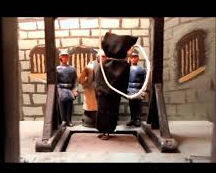
Horrific themes were always the best earners, at least 6 executions of one kind or another can be found
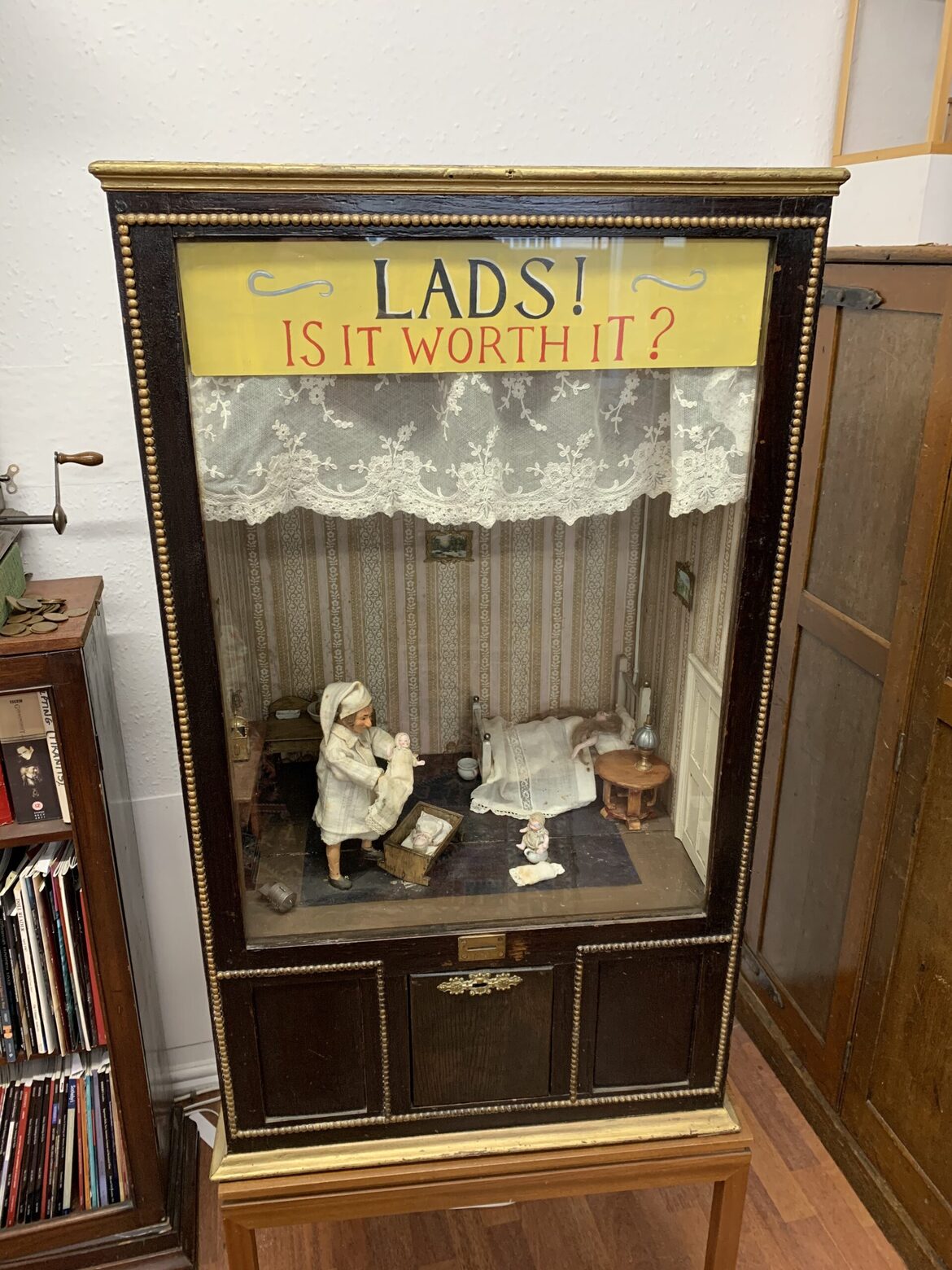
Some working models lack imagination and yet there are some, like "the cry Baby" that seems a little over thought, in this model the father tries to comfort the children at night while the wife sleeps. This model usually has the rather suggestive subtitle "Lads, was it worth it?" at the top. The idea of a working model of a crying baby seems crazy to me, but at least three makers made some variation on the subject.
..
The spiritualist's room made by Kraft
The beautifully made "Murder in the Museum " made by Dennison (a late model made by the Dennision sisters)
Another machine from the Dennison sisters Florance and Alice "the Abbots Treasure" 1938
"The Haunted Room" Bolland 1944, note the use of a much older mechanical crane case
.
"The Haunted Churchyard" Bolland 1950
The "French Execution" made by Kraft 1949
.
The "American Execution"
.
"The Burglar" Bolland 1950
.
"The Haunted house" ?
.
This intriguing working model was also a fortune teller "Pharos" Bolland 1940's
.
"The Miser" Dennison 1930's
"The Drunkards Dream" Bolland 1940's
